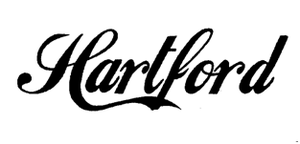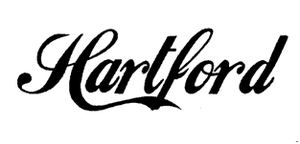
1. Hechos.
La compañía IMPALA WORLD Inc, interpone en 2015 una acción por violación de marca de la Unión europea denominativa HARTFORD, para productos de las Clases 9 y 25 del Nomenclátor en relación con la comercialización por parte de DIVARO S.A de gafas bajo la marca HARTFORD. La acción comprendía la reivindicación –o subsidiaria declaración de nulidad- de un registro español de marca mixta que había obtenido la demandada en 2012.

La actora instó al tiempo de la demanda la adopción de las medidas cautelares siguientes: 1) la inmediata cesación y/o abstención y prohibición provisional de los actos de ofrecimiento en el mercado de gafas de sol y monturas para gafas graduadas o de ver y sus accesorios; 2) la retirada de todos los citados productos que se encuentren en los puntos de venta para su distribución aunque se encuentren en posesión de terceras personas; 3) la retención, precinto y depósito de todos los productos con los signos objeto de la demanda y que se encuentren en las instalaciones y almacenes de la demandada y de sus distribuidores; 4) la anotación preventiva de la demanda reivindicatoria en el Registro de la OEPM .
El Juzgado de instancia accede a la primera y a la cuarta de las medidas solicitadas; en apelación se discute únicamente la concurrencia del requisito del fumus boni iuris con respecto a la medida de cesación.
2. Pronunciamientos.
La cuestión fundamental que analiza el TMUE es si se puede adoptar una medida cautelar de cesación cuando las demandadas ofrecen en el mercado gafas identificadas con una marca española registrada, a cuya concesión nunca se opuso la actora.
El Tribunal recuerda que el argumento del apelante responde a la llamada tesis de la inmunidad registral en virtud de la cual no puede constituir un acto ilícito la utilización de un signo que está amparado en la concesión de un registro válido y vigente. Sin embargo esa tesis quedó superada por la STJ de 21 de febrero de 2013 (C-561/11) y por la jurisprudencia del Tribunal Supremo a partir de la Sentencia de 14 de octubre de 2014 (ECLI:ES:TS:2014:5089).
La Sentencia concluye que si es posible el ejercicio de una acción de infracción frente a una marca registrada posterior, ningún obstáculo ha de existir para garantizar la efectividad de los pronunciamientos de una eventual sentencia estimatoria de aquella acción mediante la adopción de una medida cautelar que pretende anticipar uno de ellos, como es la cesación de los actos de violación.
La sentencia considera asimismo que existe riesgo de confusión entre los signos en pugna, a pesar de no estar registrados para los mismos productos, por ofrecerse en el mercado los unos como complementos de los otros. De las pruebas aportadas se infiere que las gafas constituyen con frecuencia un accesorio de prendas de vestir y forman parte de la misma línea o tendencia de moda.
Aunque ya no era necesario ningún análisis ulterior, la sentencia examina también el alcance territorial de la notoriedad de la marca de la actora. Al parecer la notoriedad de la marca había sido admitida para Francia, pero se discutía si los efectos de la notoriedad podían extenderse también a España. El TMUE, a la vista de la doctrina contenida en la STJ 3 de septiembre de 2015 (asunto C-125/14) y de los documentos aportados por la actora, concluye que concurren los presupuestos exigidos para que opere la protección reforzada como marca notoria en España, habida cuenta numerosos distribuidores en España; importante cifra de ventas en el año 2010 y publicidad en revistas especializadas.
3. Comentario.
La onda expansiva del tsunami que supuso la Sentencia del TJ en el C-561/11 ha alcanzado por fin las costas de las medidas cautelares. El argumento no puede ser más lógico: si el registro de la marca no exonera frente a la acción por infracción tampoco puede constituir un obstáculo frente a una medida cautelar cuyo objetivo no es otro que garantizar la efectividad de esa acción.
Queda en el aire, sin embargo, un interrogante. El registro de una marca en la OEPM, aunque no confiera un ius utendi que inmunice a su titular frente a la acción por violación del titular de una marca anterior ¿no otorga al menos una apariencia de derecho en el demandado que se contrapone al propio fumus boni iuris del demandante?
Sorprende además que en un caso en que el registro de marca del demandado se remonta tres años atrás en el tiempo, el presupuesto del periculum in mora propia de toda medida cautelar no parezca haber desempeñado ningún papel en la controversia.
(Fuente de la información: ANUARIO ELZABURU 2016, recopilatorio de comentarios de jurisprudencia europea en materia de Derecho de Propiedad Industrial e Intelectual que realiza Elzaburu).
Documento citado:
-Sentencia del Tribunal de Justicia (UE) Sala 1ª, de 21 de febrero de 2013
-Sentencia del Tribunal Supremo Sala 1ª de 14 octubre de 2014
-Sentencia del Tribunal de Justicia (Sala Cuarta) de 3 de septiembre de 2015
ENGLISH VERSION The possibility of securing interim relief when the defendant is the proprietor of a trademark registration. Order of the European Union Trademark Court of 12 May 2016, Hartford
1. Background.
In 2015, Impala World Inc. filed proceedings for infringement of the European Union word mark HARTFORD, covering goods in Classes 9 and 25, in relation to Divaro, S.A.’s marketing of glasses under the HARTFORD trademark. The action included a claim of ownership –or, in the alternative, a declaration of invalidityـ of a Spanish composite trademark registration that the defendant had obtained in 2012.

In parallel to the complaint, the plaintiff applied for the following interim measures: 1) that the defendant immediately cease and/or desist from offering sunglasses and frames for prescription glasses or eyeglasses and accessories thereof in the market, and be temporarily prohibited from carrying out such conduct; 2) the removal of all the aforementioned products located at points of sale, even if they are in the possession of third parties; 3) the impoundment of all the goods bearing the contested signs located in the defendant’s facilities and warehouses and those of its distributors; 4) entry of a caveat concerning the proceedings on the Spanish Patent and Trademark Office (SPTO) register.
The first instance court granted the first and fourth measures. In appeal, the debate centred exclusively on satisfaction of the fumus boni iuris requirement with respect to the cessation measure.
2. Findings.
The EU trademark court essentially analyses whether a preliminary injunction to cease the conduct at issue can be granted when the defendants are marketing glasses identified by a registered Spanish trademark against which the plaintiff had never filed opposition.
The court points out that the appellant’s argument is based on so-called immunity through registration, by virtue of which the use of a sign protected by a registration that is valid and in force cannot constitute an unlawful act. However, that reasoning was overcome by the ECJ’s judgment of 21 February 2013 (C-561/11) and by Spanish Supreme Court case-law established in the judgment of 14 October 2014 (ECLI:ES:TS:2014:5089).
The judgment concludes that if proceedings for infringement can be brought against a later trademark registration, there should be no obstacles in the way of ensuring the effectiveness of findings in favour of the plaintiff by means of interim relief that seeks to implement one of those findings in advance, namely, cessation of the infringing acts.
The judgment also considers that there is a likelihood of confusion between the signs at issue, despite the fact that they are not registered for the same goods, insofar as one product is offered in the market as an accessory for the other. It can be inferred from the evidence submitted that glasses are often a clothing accessory and form part of the same fashion line or trend.
Although subsequent analysis was no longer necessary, the judgment also examines the territorial scope of the well-known character of the plaintiff’s trademark. It appears that the mark had been deemed well known in France, but there was debate as to whether the effects of that well-known character also extended to Spain. The EU trademark court, based on doctrine established in the ECJ’s judgment of 3 September 2015 (C-125/14) and the documents submitted by the plaintiff, concludes that the requirements for the heightened protection conferred on well-known trademarks to apply in Spain were satisfied, given that party’s numerous distributors in Spain, its significant sales turnover in 2010 and advertising in specialist magazines.
3. Remarks.
The tsunami wave triggered by the ECJ’s judgment in C-561/11 has finally reached the shores of interim relief. The argument could not be more logical: if registration of a trademark does not preclude infringement proceedings, then it cannot obstruct interim measures aimed at ensuring the effectiveness of those proceedings either.
However, there is one question that remains unanswered.Although registration of a trademark at the SPTO does not confer a right of use, or ius utendi, which immunises its proprietor against infringement proceedings filed by the holder of an earlier trademark, does it not at least give the defendant a prima facie case that will counter the plaintiff’s own fumus boni iuris?.
It is, moreover, surprising that in a case in which the defendant’s trademark was registered three years previously, the periculum in mora requirement inherent to all interim relief does not appear to have played any role in the dispute.
ElDerecho.com no comparte necesariamente ni se responsabiliza de las opiniones expresadas por los autores o colaboradores de esta publicación








